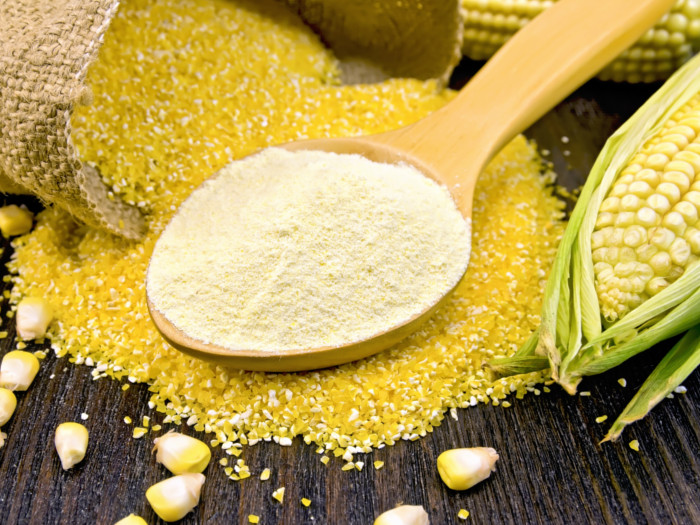You can use many of these cornmeal substitutes if you are short on this ingredient, if you want to change the flavor, or simply experiment with your favorite recipes.
Cornmeal Substitutes
Many cornmeal substitutes are derived from corn, while others are popular because they are healthier options. Cornmeal is ground corn that is used in baking and in savory recipes for texture or flavor. It is made in the same way as corn flour, but the grains are larger and therefore used in recipes that require a more substantial texture. There are some great substitutes that must be selected based on their flavor, consistency or texture. These include polenta, corn grits, corn flour, semolina, and ground flaxseed. [1]
Polenta
Polenta is widely considered the best substitute for cornmeal. Although it has a different name, polenta and cornmeal are essentially the same things! Polenta comes in a range of coarseness, but the texture and taste are nearly identical.

Cornflour, commonly known as cornstarch, is the finely ground version of corn kernels. Photo Credit: Shutterstock
Corn Grits
Another nearly identical replacement for cornmeal, corn grits are also made from ground corn. However, grits tend to be larger, coarser grains than cornmeal, so you’ll need to take that into account in liquid recipes. [2]
Corn Flour
Cornmeal is often used as a drying agent. In these cases, corn flour will do just as well, although you might need to use slightly more corn flour than cornmeal to achieve the same effect, as it is a finer grain. Corn flour can also be a good substitute for cornmeal in recipes that include deep-fat frying, as it offers the same corn flavor as cornmeal.
Wheat Flour
Although corn flour is the primary replacement for cornmeal, you will find that other flour types will do a similar job, particularly when coating wet foods in preparation for deep-fat frying. It will give the required texture in other kinds of recipes, but not the same flavor. If possible, use wheat flour and rice flour for the best effects.
Semolina
Semolina mirrors the texture of cornmeal in a recipe, but not the flavor. This ancient grain is a good potential substitute in desserts and is a great corn-free alternative for those with corn allergies. [3]
Ground Flaxseed
Ground flaxseed is a healthy alternative that will provide a similar texture, and is another good option for anyone with a corn allergy. Flaxseed has a similar consistency to cornmeal, but a slightly bitter flavor. For this reason, it’s best used as a substitute in recipes where cornmeal is a minor ingredient that won’t necessarily alter the overall flavor. [4]
